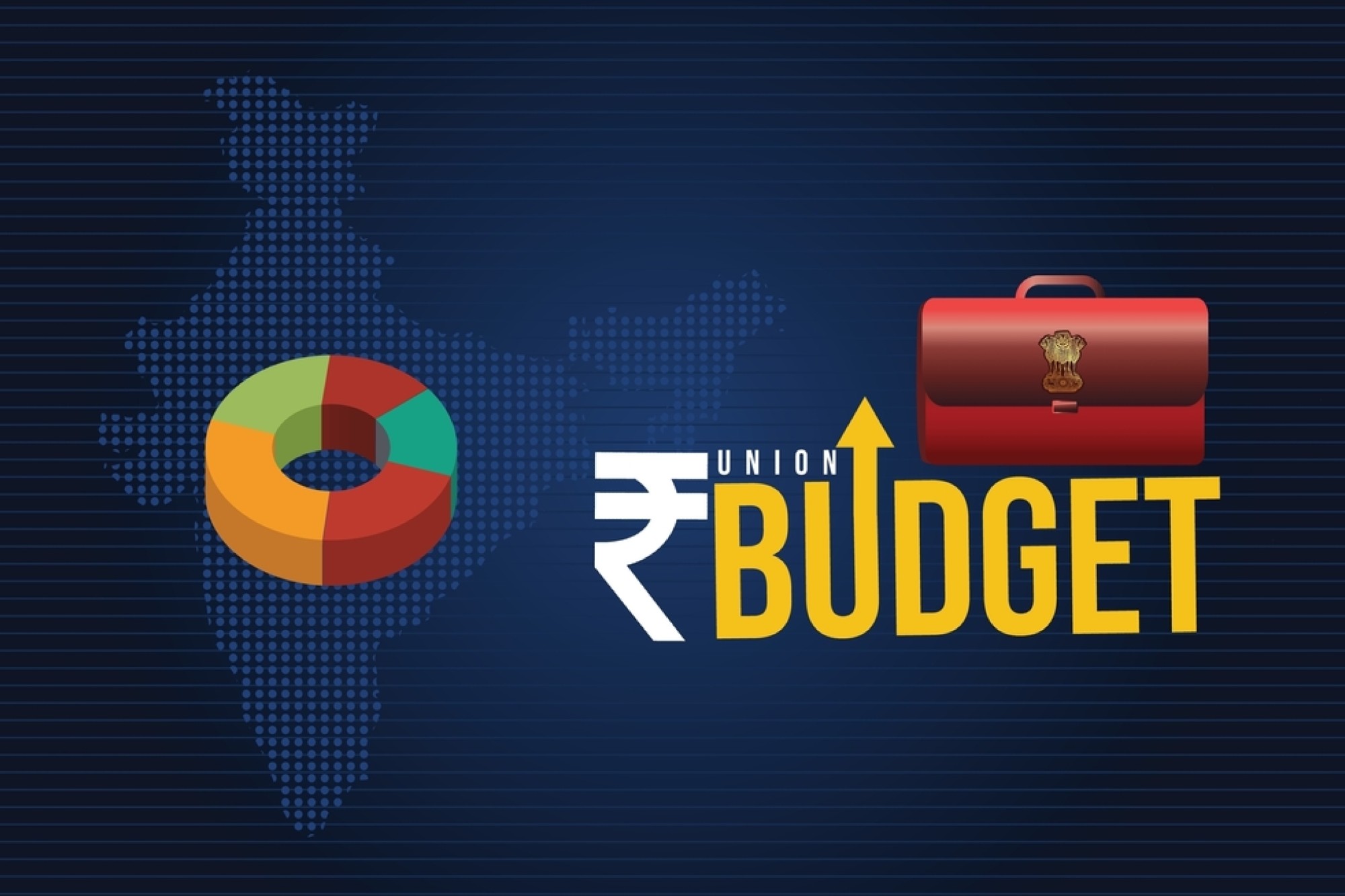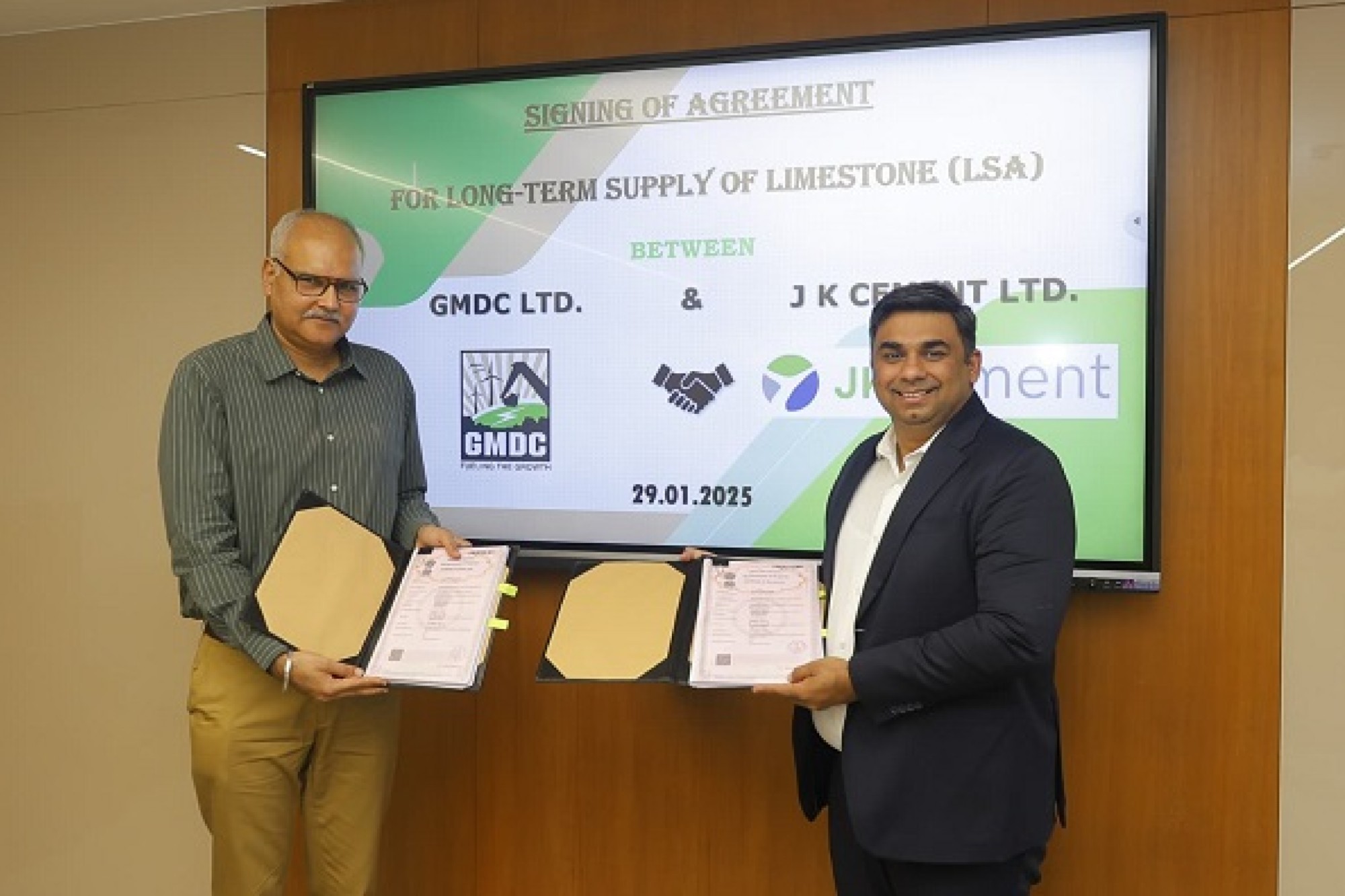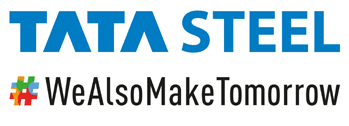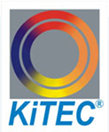A forward-thinking budget for projects
By Staff Report | February 3, 2025 7:45 pm SHARE

Union Budget 2025-26, unveiled by Finance Minister Nirmala Sitharaman, is a clarion call for sustainable development and modern infrastructure. Praised by construction, mining, and allied sector leaders, this budget outlines an ambitious plan to boost economic resilience, drive digital transformation, and spearhead clean energy initiatives across India.
The Union Budget 2025-26, presented by Finance Minister Nirmala Sitharaman, has drawn widespread acclaim from industry leaders across the construction, infrastructure, mining, and allied sectors. With its emphasis on sustainable growth, infrastructure development, digitalisation, and clean energy, this budget is viewed as a forward-thinking blueprint for India’s future. It outlines the government’s commitment to building a resilient economy and opens up new opportunities for private sector participation in driving the country’s growth.
Building a stronger infrastructure
The budget allocated ₹1.5 lakh crore to state governments as interest-free loans for capital expenditure. This significant outlay accelerates infrastructure projects, particularly in the road, highways, and urban development sectors. These funds are expected to be a major growth driver for the construction and infrastructure industries, which have long relied on government spending to boost their pipelines. The government’s continued investment in infrastructure is a strong signal that modernisation and urbanisation remain top priorities.
The announcement of the second phase of the Asset Monetization Plan, aiming to raise ₹10 lakh crore by leveraging existing government assets, is crucial in generating funds for new infrastructure projects. By recycling capital from old projects, the government can fund new ones without significantly increasing its fiscal deficit, ensuring a steady stream of projects that will keep the construction sector buzzing. This initiative is also expected to open up avenues for private investment, sparking innovation and creating more employment opportunities.
Industry leaders are optimistic about this approach. The infrastructure and real estate sectors will likely witness a surge in activity, with construction companies eyeing new projects, particularly in urban redevelopment. These projects will help alleviate the housing shortage and boost the demand for construction materials such as cement and steel. The government’s commitment to building 50,000 new dwelling units in stressed housing projects is another welcome step, providing much-needed relief to middle-class families and fostering rapid urbanisation.
Public-private partnerships
A key highlight of the budget is the emphasis on Public-Private Partnerships (PPP) as a means of fast-tracking infrastructure development. The government has unveiled a coordinated three-year pipeline of projects that can be implemented through PPPs, further encouraging private sector participation in infrastructure. This approach is expected to increase the efficiency and speed of project execution, allowing both public and private players to leverage their strengths.
The construction equipment industry is particularly excited about the ₹2.87 lakh crore allocation for road transport and highways, which aligns with the government’s mission to modernise India’s road infrastructure. This allocation and the extension of the National Infrastructure Pipeline (NIP) will boost demand for construction machinery and equipment, ensuring a steady flow of projects for years to come. The emphasis on urban infrastructure is equally important, as it creates opportunities for private sector companies to participate in building smart cities and modern transport networks.
The PPP model is being hailed as a game-changer for the industry, with private companies now more involved in the planning and executing large-scale projects. Sharing data from the PM Gati Shakti portal with private players will also improve project planning and minimise inefficiencies in resource utilisation. This collaborative approach is expected to foster an environment where private companies can contribute to nation-building in a more structured and impactful way.
Mining sector reforms
The mining sector also benefits from the reforms outlined in the budget. The government’s decision to institute a State Mining Index and encourage best practices in mining is expected to enhance transparency and competitiveness in the industry. Also, a dedicated policy for recovering critical minerals from tailings will unlock new opportunities for companies to extract more value from their operations. These reforms will boost the efficiency of the mining sector, making it more sustainable and profitable in the long run.
Experts in the field are also hopeful that the government willwill prioritise sustainable mining methods. As greater emphasis is placed on clean energy and green technology, the industry is anticipated to shift to more ecologically friendly methods, raising its level of competitiveness globally.
Clean energy and digitalisation
The Union Budget 2025-26 also strongly emphasises clean energy and digitalisation, two areas that are expected to play a critical role in shaping the future of infrastructure. The Clean Tech Manufacturing Mission will receive robust support under the National Manufacturing Mission, focusing on electric vehicle (EV) batteries and renewable energy technologies. This initiative is expected to improve domestic manufacturing capabilities, reduce import dependency, and foster innovation in clean energy infrastructure.
The customs duty exemption on lithium-ion battery scrap and critical minerals is a welcome move for industries looking to invest in sustainable energy solutions. This exemption will make the recycling process more cost-effective and ensure a steady supply of essential raw materials for domestic manufacturers. Including 35 capital goods for EV battery manufacturing and 28 for mobile phone battery manufacturing on the list of goods eligible for customs tax exemptions is another positive step towards boosting India’s manufacturing capabilities in the clean energy sector.
Digitalisation is another critical budget component, with initiatives like PM Gati Shakti and BharatTradeNet expected to streamline logistics and project execution. These digital platforms will enhance efficiency in infrastructure development, making it easier for companies to plan and execute projects. The emphasis on smart cities and modern transport networks will also open up new opportunities for companies involved in digital infrastructure.
Industry reactions: Optimism and confidence
The overall reaction from the industry has been one of optimism and confidence. Leaders across construction, infrastructure, mining, and allied industries have praised the government’s forward-thinking approach to infrastructure development, clean energy, and digitalisation. The focus on skill development, particularly through establishing the National Centers of Excellence for Skilling and Vocational Training, is also viewed as a positive step towards creating a future-ready workforce that can meet the demands of a rapidly changing industry landscape.
The Union Budget 2025-26 laid the foundation for sustainable growth, emphasising innovation, private sector participation, and digital transformation. As the government continues to invest in infrastructure and clean energy, the construction, infrastructure, and mining industries are poised to play a pivotal role in driving India’s economic growth. With these initiatives, India is well on its way to becoming a global leader in sustainable infrastructure development and manufacturing. Here is how a few key players from diverse industry sectors reacted to the budget’s announcements.
“As we continue to build a stronger future for India, the 2025 Union Budget offers a clear path forward, focusing on sustainable growth, affordable housing, and infrastructure development. The completion of 50,000 dwelling units in stressed housing projects and the ₹1.5 lakh crore allocation for infrastructure will bring much-needed relief to middle-class families, helping them move closer to homeownership while fostering rapid urbanisation. We are optimistic about the Rs 10 lakh crore asset monetisation plan, which will infuse capital into new projects, sparking innovation across key sectors. Additionally, the focus on expanding infrastructure through PPP models and streamlining trade and warehousing facilities will create a conducive environment for cement demand, driving sustainable growth in the industry. These initiatives will build the foundation for India’s future.”
– Arun Shukla, President & Director, JK Lakshmi Cement Ltd
“The Union Budget reflects a strong commitment to inclusive and sustainable growth, covering key areas such as infrastructure development, green energy, taxation reforms, and social welfare. The substantial increase in funding for key infrastructure projects, NIP extension, bridging the rural-urban divide, and enhanced allocations of urban infrastructure set the stage for new opportunities in the Construction Equipment Industry. The ₹2.87 lakh crore allocation for road transport and highways is a significant investment that aligns with our mission to support and strengthen India’s infrastructure growth.
Furthermore, emphasising the National Centers of Excellence for Skilling and Vocational Training is a welcome move, ensuring that India is future-ready by integrating innovation, technology, and workforce development. With initiatives like the National Manufacturing Mission, 50,000 Atal Tinkering Labs, and Centres of Excellence in AI, the government fosters a robust ecosystem that promotes growth, upskilling, and employment generation. We are excited to be part of this transformative journey and contribute to India’s economic and industrial progress.”
– Shalabh Chaturvedi, MD, CASE Construction Equipment – India & SAARC
“The Union Budget 2025-26 lays a strong foundation for India’s infrastructure growth. The government’s focus on Public-Private Partnerships (PPP) and a ₹1.5 lakh crore capital expenditure outlay for states will accelerate highway expansion and modernisation. The new Asset Monetization Plan, reinvesting ₹10 lakh crore into infrastructure, will further enhance funding availability for road projects.
We welcome the emphasis on digitalisation through PM Gati Shakti and BharatTradeNet, which will improve logistics efficiency and streamline project execution. Additionally, the plan to boost tourism infrastructure will drive demand for better road connectivity, reinforcing the role of highways in economic growth. With regulatory reforms simplifying project approvals, Ammann India is optimistic about a more seamless and rapid implementation of road construction projects. We believe that this will strengthen India’s infrastructure ecosystem, which is crucial to achieving the desired GDP growth and trade and generate employment, ensuring inclusive and sustainable development.”
– Dheeraj Panda, Managing Director, Ammann India
“The Union Budget 2025-26 marks a transformative step towards strengthening India’s infrastructure and export capabilities. Launching the Export Promotion Mission, along with sector-specific targets and digital public infrastructure for international trade, is a forward-thinking approach to elevate India’s global presence in manufacturing. This initiative aligns with our commitment to support domestic manufacturing in joining global supply chains, fostering a competitive and sustainable growth trajectory. The focus is on infrastructure development, including 50 years of interest-free loans and PPP incentives. Also, the Rs 10 lakh crore asset monetisation plan will significantly boost the construction and heavy machinery sectors. The Rs 1.5 lakh crore allocation will foster growth and investment, while the emphasis on skill development will drive innovation.”
– Deepak Garg, Vice Chairman & Managing Director, SANY India
“The budget reflects a genuine commitment to spur up growth by placing more money in the hands of people, while the sticks to fiscal prudence. This is a tough act, but it is right to keep the country geared up to tackle global uncertainties. With corporate balance sheets fairly strong, the wants the private sector to step up on capex, and the asset monetisation target of 10 lac crores will make significant opportunities available for the private sector to deploy resources. The continuation of tax exemption to sovereign wealth funds & pension funds sends the right message to global money that they are welcome to participate in the Indian growth story.”
– Virendra D. Mhaiskar, Chairman & Managing Director, IRB Infrastructure Developers Limited
“With ₹1.5 lakh crore allocated as interest-free loans to states for infrastructure development and continued investment in highways, urban transport, and smart cities, the Union Budget 2025 reinforces the government’s commitment to modernising India’s infrastructure. The emphasis on digitalisation and sustainable construction practices is a welcome move that will enhance project efficiency, improve quality, and reduce waste. At Trimble, we see immense potential in leveraging AI, automation, and digital twin technologies to support this vision. By integrating advanced construction technologies, we can help India build faster, safer, and more cost-effective infrastructure that stands the test of time.”
– Harsh Pareek, Regional Sales Director, India and SAARC, Trimble Solutions.
“The Union Budget 2025, emphasising inclusive development, accelerated growth, and private sector investments, is pivotal in strengthening India’s industrial and economic foundation. The rationalisation of customs tariffs will enhance India’s global competitiveness, benefiting manufacturers. At the same time, the focus on MSMEs—crucial contributors to India’s GDP and exports—will empower them to diversify offerings and expand internationally. The strategic and forward-thinking approach fosters a pro-business environment encouraging both FDI and domestic investment.
The ambitious 100 GW nuclear target represents a bold commitment to sustainable growth, driving investments in infrastructure, technology, and human capital while positioning India as a leader in clean energy on the global stage. Honourable Finance Minister Nirmala Sitharaman has also emphasised the government’s commitment to strengthening the domestic electronics equipment industry, creating significant opportunities for youth. The government’s emphasis on skill development across industries, particularly in the nuclear and footwear sectors, will create thousands of jobs and build a robust workforce prepared to meet future challenges. With the footwear sector alone employing over 4 million people, the focused scheme will drive significant job creation and enhance India’s position in the global supply chain. Lastly, restructuring income tax slabs will enhance disposable income, providing greater purchasing power to consumers. By directly benefiting the middle class, this policy will catalyse broader consumption, supporting businesses and driving momentum across key sectors.”
– S Sunil Kumar, Country President, Henkel Adhesive Technologies India
“The 2025-26 Budget continues the focus on capex spend and puts more money in the hands of the middle-income group using tax relief as the means. This will provide a fillip to demand growth and employment while also being fiscally responsible.
The budget is also very inclusive as most sections of society and sectors of the economy (including Manufacturing, MSMEs, Agri, Startups, Tourism, Skilling, and Training in AI) have been thought of and have been provided support for growth or transformation. FDI in insurance, EoDB with the rationalisation of import duties & other provisions, the nuclear energy mission for 100GW energy, India Post as a logistics organisation leveraging last mile connectivity, and personal income tax changes are some other highlights.
The infra and CE segments should continue to see further equipment demand growth, with a Capex allocation of 11.2 lac crore in the coming year. Rs. 10 lac crore of national monetisation pipeline over the next five years will provide a huge boost to private investment, helping the government focus and spend more on social aspects of health, education, and skilling.
The budget 2025-26 is positioned to boost demand in all parts of the economy, moving India further towards self-reliance and global competitiveness and maintaining its position as the fastest-growing major economy for the coming years.
– Dimitrov Krishnan, Managing Director, Volvo Construction Equipment
“The Union Budget 2025 placed a strong focus on the Public-Private Partnership (PPP) model, and we recognise the government’s initiatives to enhance the private sector’s role in the country’s development. It is anticipated that the government’s coordinated three-year project pipeline, which is supported by ministries and the India Infrastructure Project Development Fund (IIPDF), will not only speed up the completion of projects but also sustain private-sector participation. The cooperative framework in which states are encouraged to bid for PPPs is considered an important step towards efficiency and faster infrastructure development.
Further strengthening this momentum, the launch of the second Asset Monetization Plan, with ₹10 lakh crore earmarked for reinvestment, underscores the commitment to leveraging existing assets to fund new projects. Besides, sharing PM Gati Shakti’s data with private players will help improve project planning and execution and minimise inefficiencies in resource utilisation. With these initiatives, the PPP model is well positioned to take a significant lead in fast-tracking India’s infrastructure development, foster cooperation between the public and private sectors, and drive sustainable economic growth.”
– Kavita Shirvaikar, Managing Director of Patel Engineering Limited
“We commend the budget for its focus on strengthening the shipping sector with ₹25,000 crore Maritime Development Fund and the Tonnage Tax Scheme’s expansion to inland vessels that will enhance port connectivity and streamline maritime operations. The government’s plan to set up a digital public infrastructure, ‘BharatTradeNet’ (BTN), for ease of documentation in international trade and domestic manufacturing capacities to integrate the Indian economy with the global supply chain and help the private sector with data and maps from PM Gati Shakti’s insights are admirable initiatives that will boost domestic as well as international trade. Furthermore, the budget’s focus on improving air cargo infrastructure and the launch of ‘Udaan 2.0’, connecting 120 new destinations, is a welcoming move for the logistics sector. Overall, this budget is a strong step towards the broader vision of ‘Viksit Bharat’ by 2047. We at CJ Darcl are looking forward to the opportunities these projects present and are dedicated to supporting the government in developing a robust, sustainable, and globally competitive logistics ecosystem.”
– KK Agarwal, Chairman & Managing Director, CJ Darcl Logistics
“India’s infrastructure environment is being redefined by Public-Private Partnerships (PPPs), which give crucial projects efficiency, speed, and innovation. PPPs are speeding up execution, releasing investment, and increasing industrial capacity in manufacturing, logistics, and mobility by fusing the public sector’s vision with the private sector’s experience. This partnership aims to construct a robust, future-ready economy, not only roads, railroads, and ports.
With a greater emphasis on digital integration, sustainability, and smooth mobility, PPPs will create high-value jobs and stimulate economic growth. The focus on long-term funding and structural changes will further enhance India’s competitiveness on the international scene. India is poised to set new standards for infrastructure quality by creating an environment where the public and private sectors collaborate. A solid PPP structure will ensure that progress is not only world-class but also inclusive, sustainable, and aligned with India’s long-term development goals.
– Vivek Lohia, Managing Director of Jupiter Wagons Limited
“Establishing the National Manufacturing Mission is a significant boost to the Make in India initiative. It’s a commendable move that will accelerate growth in the welding and manufacturing sectors. Another crucial aspect is the commitment to climate-friendly development and clean technology manufacturing—an urgent need of the hour and a step in the right direction. As industries, we have a key role in environmental protection.
Additionally, announcing a National Skilling Center to enhance workforce capabilities in the manufacturing sector is another positive step. With these initiatives, India will soon become a global manufacturing hub, driving innovation, sustainability, and economic growth.”
– Lajpat Yadav, COO- India Welding Business, Ador
“The Budget 2025 is a progressive and strategic blueprint demonstrating the government’s commitment to infrastructure development, innovation, and the vision of Viksit Bharat. The proposal to fully exempt basic customs duty on lithium-ion battery (LiB) scrap and critical minerals such as Lead and Zinc is a transformative policy intervention. This move will streamline cost-efficient recycling processes, ensure a steady supply of essential raw materials, and enhance their accessibility for domestic manufacturers. Together, these measures will serve as levers to further localise LiB component manufacturing in India and contribute to the government’s Make in India mission. By fostering a circular economy, this initiative will significantly reduce import dependency, create employment opportunities for India’s youth, and drive the nation closer to self-reliance in EV battery manufacturing.
Including 35 capital goods for EV battery manufacturing and 28 for mobile phone battery manufacturing to the list of capital goods eligible for customs tax exemptions is a decisive step toward strengthening India’s domestic lithium-ion battery production capabilities. This will position India as a competitive player in the global EV and electronics supply chain and catalyse innovation in energy storage technologies, a critical enabler for the clean energy transition.
The budget’s emphasis on Clean Tech manufacturing, particularly EV batteries, along with the allocation of ₹ 20,000 crore for private sector-driven R&D and innovation initiatives, is a much-needed move. It will accelerate technological advancements, reduce reliance on foreign know-how, and create indigenous innovation ecosystems. This is particularly significant for industries like ours, where cutting-edge research and development are key to maintaining global competitiveness.”
– Anurag Choudhary, CMD & CEO of Himadri Speciality Chemical Limited
“We welcome the government’s focus on infrastructure development, a key driver with significant positive implications for the real estate sector. The proposed ₹1.5 lakh crore interest-free loans to states and the ₹10 lakh crore capital infusion will catalyse new projects and urban redevelopment. Support for affordable and mid-income housing and mining sector reforms will further bolster industry growth.”
– Siddharth Vasudevan Moorthy, Managing Director of Vascon Engineers Ltd
“As Budget 2025 plans revolve around national growth and getting new opportunities, it brings new initiatives like The National Manufacturing Mission while greatly focusing on the Public-Private Partnerships (PPP). Similarly, it aims to strengthen India’s manufacturing sector, thus improving policies with the help of governance systems and making sure ‘Make in India’ remains a priority. Public-Private Partnership, on the other hand, aims to use the private sector’s expertise and spending to benefit society by quickening the construction of major projects like roads, bridges and urban development areas.”
– Brij Bhushan Agarwal, Vice Chairman and Managing Director, Shyam Metalics
“We applaud the focus on urban infrastructure provided by the 2025 budget, particularly ₹1 lakh crore Urban Challenge Fund. This will help transform cities into growth hubs, support creative redevelopment, and enhance water and sanitation infrastructure. With PPP creating a 3-year pipeline of projects, this constitutes a major step toward modernising urban transit and connectivity, consistent with SYSTRA’s mission to provide innovative and sustainable mobility solutions.
Expanding IITs and creating a Centre of Excellence in AI (India AI Mission) will help India develop as a Global Capacity Centre. This will support the consulting industry in continuing to deliver more from India.
However, while the budget has met several key expectations, we still hoped for specific support to the urban mass transit sector, such as electric mobility incentives and smart city technology development. Also, sectors such as renewable energy integration and smart transportation infrastructure hardly got a mention for having a crucial role in bringing about future-ready urban landscapes. We remain hopeful that more direct mention will be made of such areas in coming initiatives to ensure a more holistic and sustainable urban infrastructure development.”
– Hari Somalraju, MD & CEO , SYSTRA INDIA
Cookie Consent
We use cookies to personalize your experience. By continuing to visit this website you agree to our Terms & Conditions, Privacy Policy and Cookie Policy.






































































